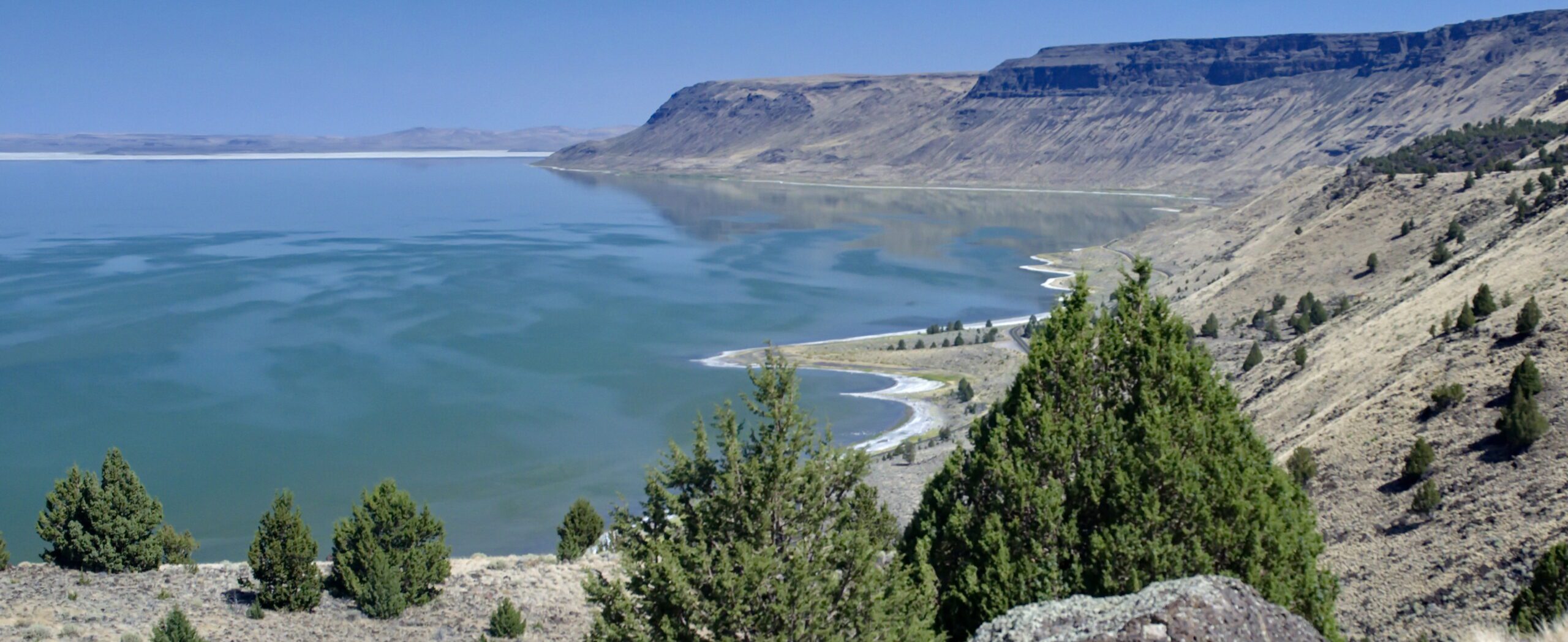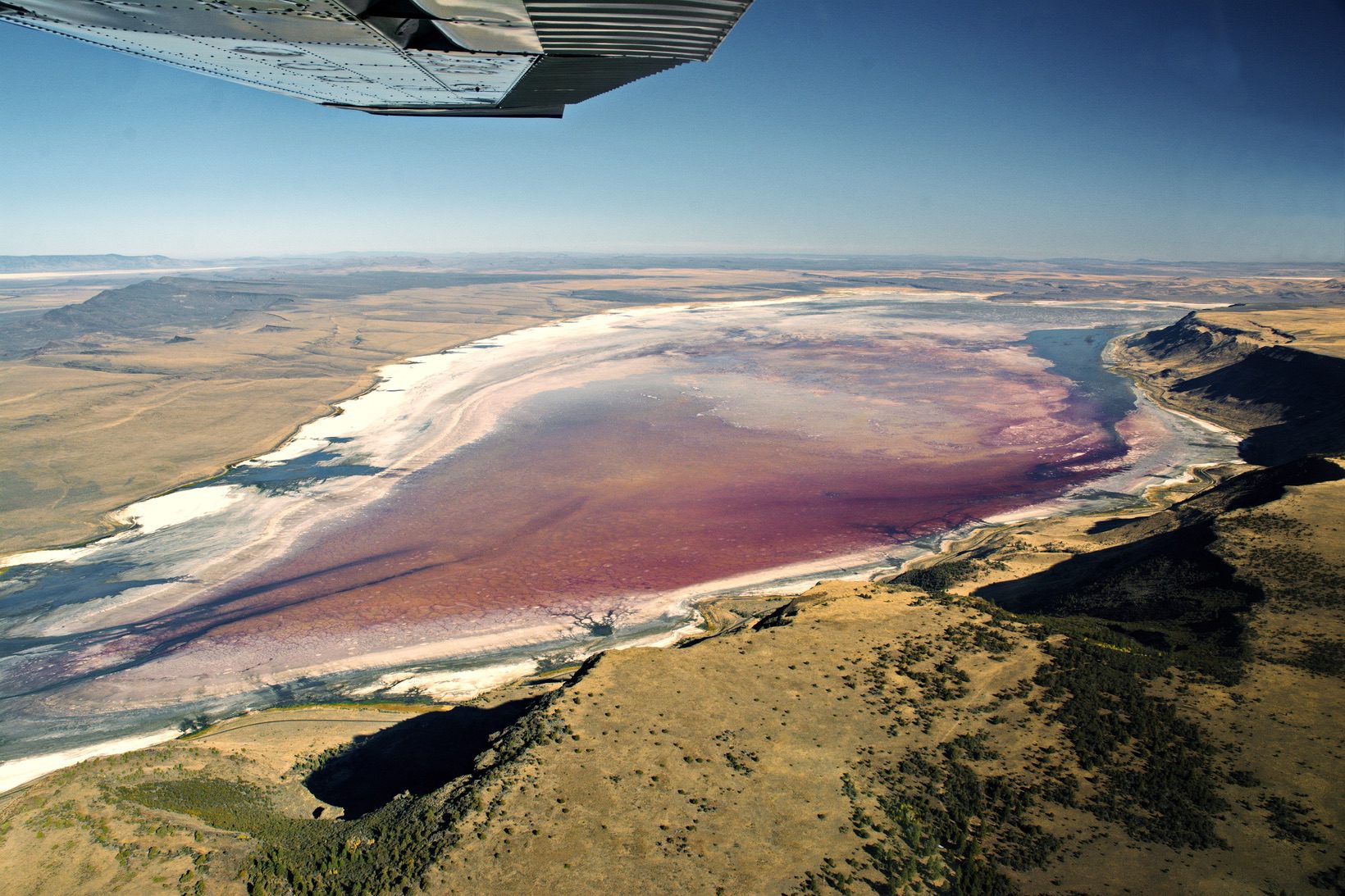Project Description
Lake Abert, located in Lake County, is a unique inland saline lake that is critical migratory bird habitat for an estimated 3.25 million bird-use days per year. Some years, a quarter of the world’s population of Wilson’s Phalarope (Phalaropus tricolor) stops to molt and feed before the nonstop flight to Argentina.
Since 2011, John Reuland, project leader, volunteers from ECBA, other western Audubon chapters, and various educational and environmental organizations have coordinated time windows between July and December to survey phalaropes and other interesting birds using the lake.
Why We Do This and What We Have Learned
The stated purpose for this project is to monitor the populations of Wilson’s Phalaropes and Red-necked Phalaropes (Phalaropus lobatus). Annual phalarope counts have varied from 0 to 200,000+ annually since 2011, primarily in response to varying water levels in Lake Abert. Depending on the year, the lake is also a stopover for a few to 10,000+ Black-necked Stilts (Himantopus mexicanus), American Avocets (Recurvirostra americana), Eared Grebes (Podiceps nigricollis), Northern Shovelers (Spatula clypeata), and other waterfowl and shorebirds.
For additional information
Click here for Ron Larson’s Lake Abert program synopsis from the November 2017 Birders’ Night.
What Volunteers Do
Volunteers drive US-395 along the eastern shore of Lake Abert in the early morning, making appropriate stops to count Wilson’s & Red-necked Phalaropes using binoculars and scopes. Counting can be challenging as views can be inhibited by smoke from fires in the region, wind, or heat waves while looking at a lake that is up to five miles wide in places.
Project Focus Areas
- Population Monitoring
- Bird Conservation
Would You Like to Volunteer?
To volunteer or for more information, email your contact information to project leader John Reuland, john.r.reuland@gmail.com. Please put “Lake Abert Bird Survey” in the subject line.
Note: Driving multiple vehicles from Bend is a poor alternative due to both the distance traveled and the limited parking space at many of the survey locations. Volunteers should plan to carpool.
Other Projects
- Bluebird Nest Box Project
- Cabin Lake Bird Blind
- Deschutes Land Trust / ECBA Bird Surveys
- Don and Lowell Franks Nest Box Project
- Geographic Information Systems (GIS) Project Support
- Golden Eagle Nest Camera on Whychus Creek
- Greater Sage-Grouse Project
- Hummingbird Garden at Bend’s Orchard Park
- Kestrel Nest Box Project
- Pinyon Jay Study
- Summer Lake Shorebird Survey
- Vaux’s Swift Migration Survey
- Winter Raptor Surveys


